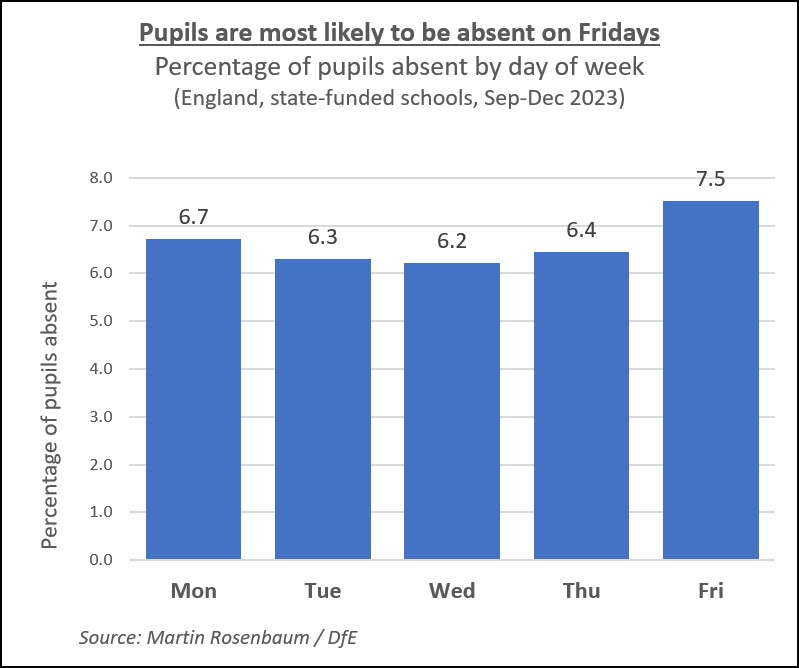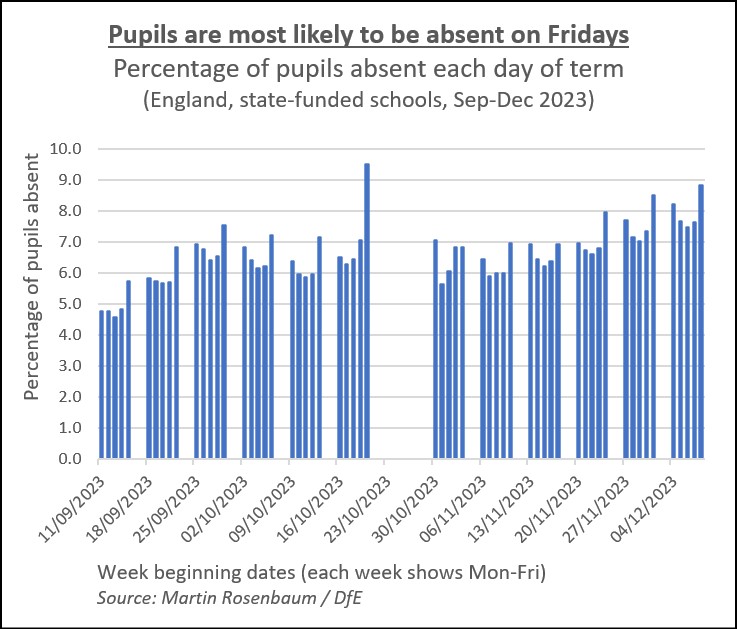Pupils are over 20 per cent more likely to be absent from school on Fridays compared to Wednesdays.
The average rate of absence last term in England’s state-funded schools was 7.5% on Fridays. This compares to 6.7% on Mondays, the next most common day for school absence, and the lower figures for the middle of the week: 6.3% for Tuesdays, 6.2% for Wednesdays and 6.4% for Thursdays.
I have derived these figures by analysing the detailed school attendance data collected and published by the Department for Education.

The issue of school attendance is moving up the political agenda, as levels of absence are now much higher than before the covid pandemic.
The government has today announced what it calls ‘a major national drive to improve school attendance’, with measures targeted at tackling persistent absence. The Labour party is also focusing on the issue this week.
This weekly pattern of absence being highest on Fridays, and second-highest on Mondays, with better attendance mid-week, is a widespread feature of the current school system.
From my analysis of the DfE’s data, it applies in both primary and secondary schools, and also in all regions of England.
It is seen when looking both at authorised and unauthorised absences from school. This includes applying to absence due to illness, which is the most common reason recorded for pupils not attending school.
It was also evident throughout the autumn term, as can be seen in this chart (with a particular peak on the Friday before half-term).

The DfE’s data on school attendance can be downloaded here.
In a previous post I examined how school attendance can be affected by when in the year pupils are born.